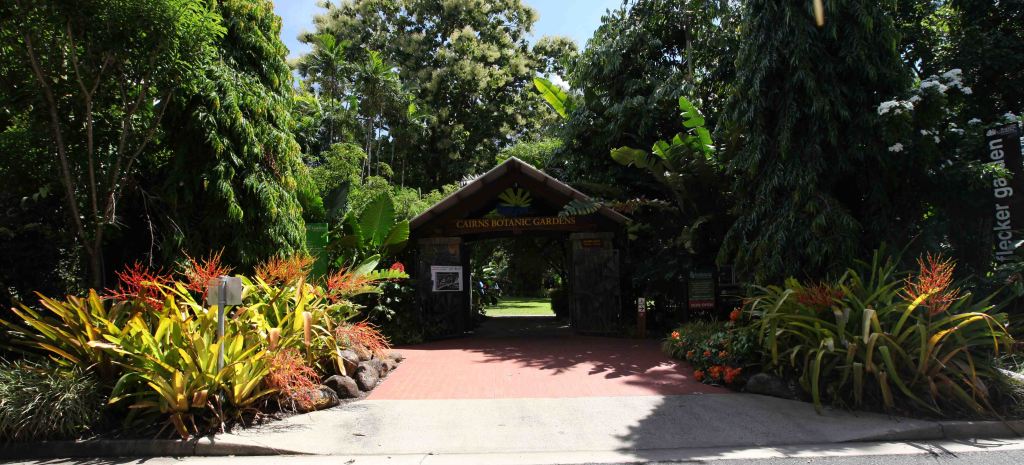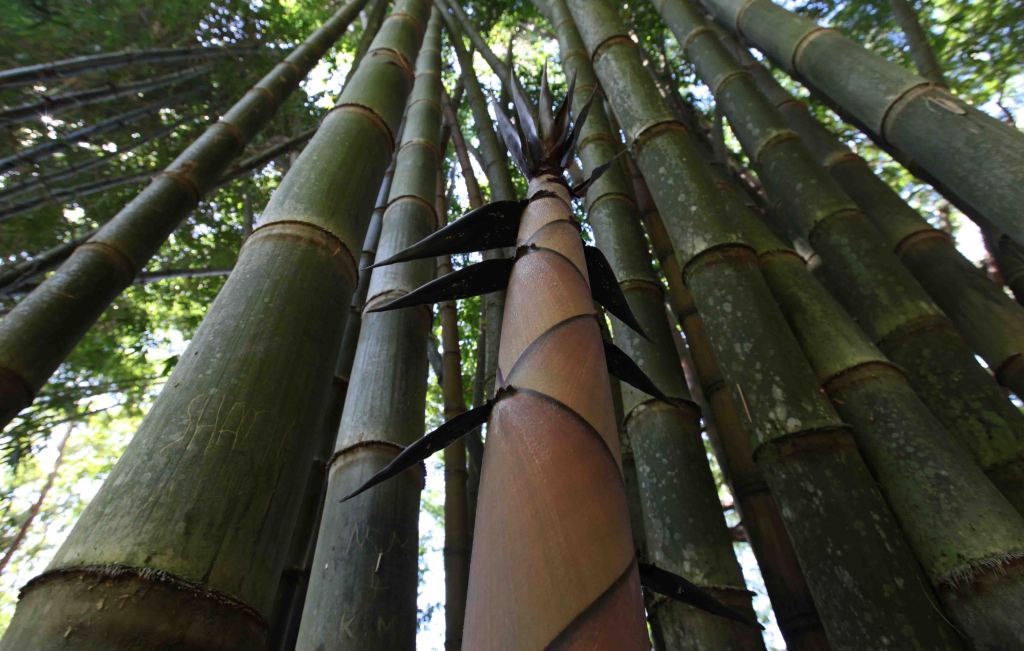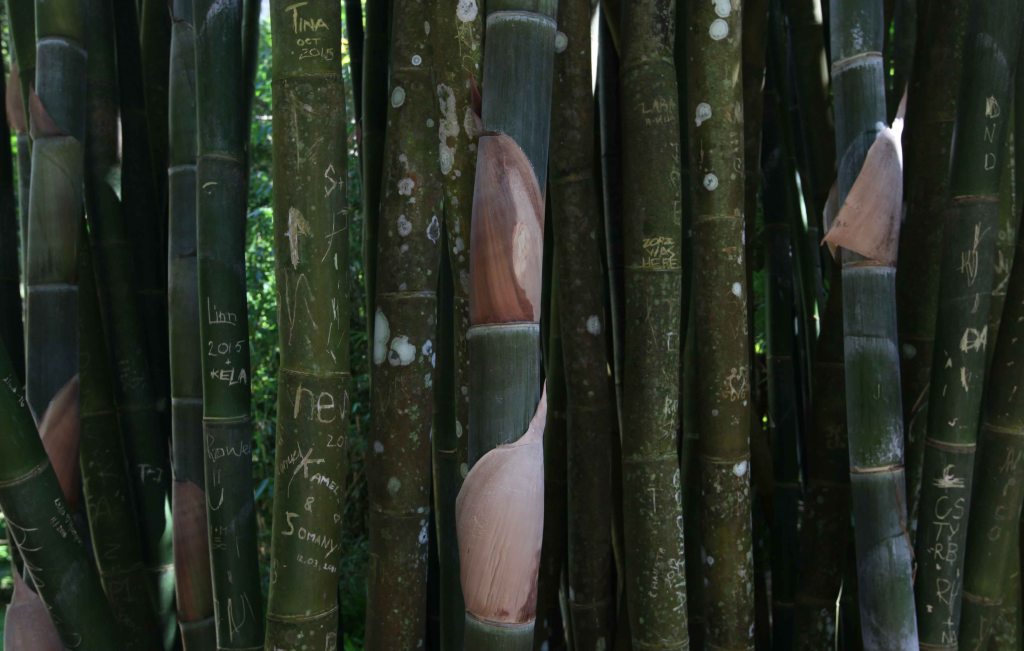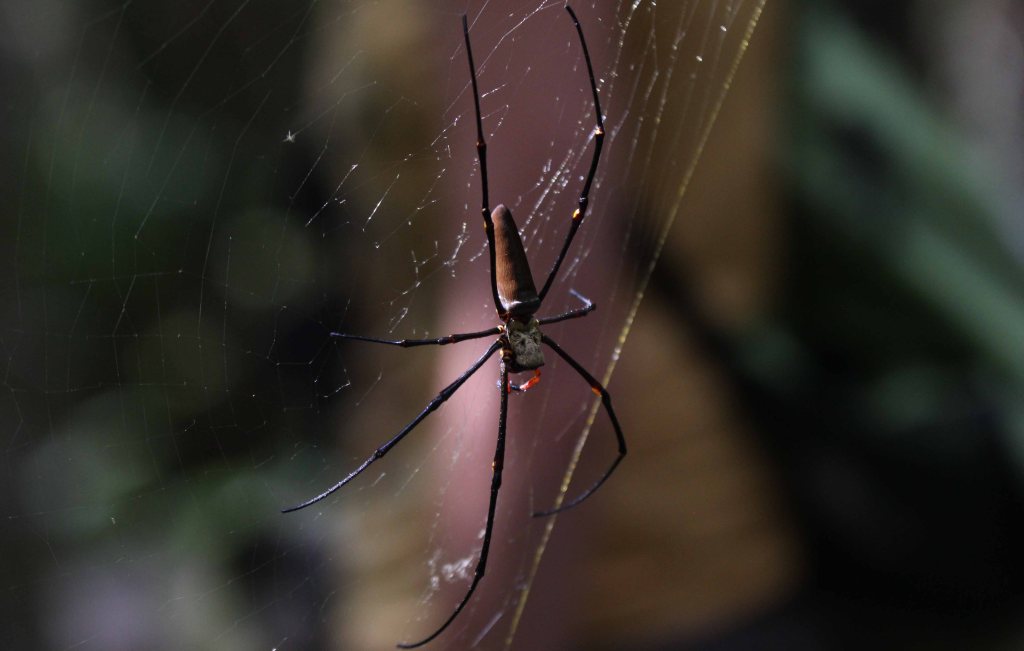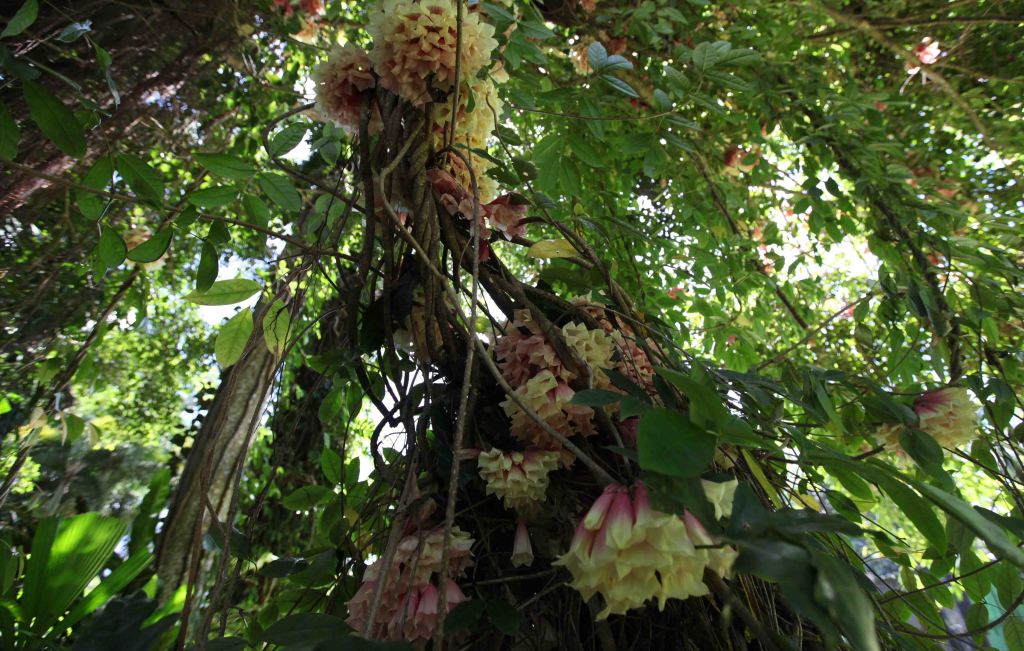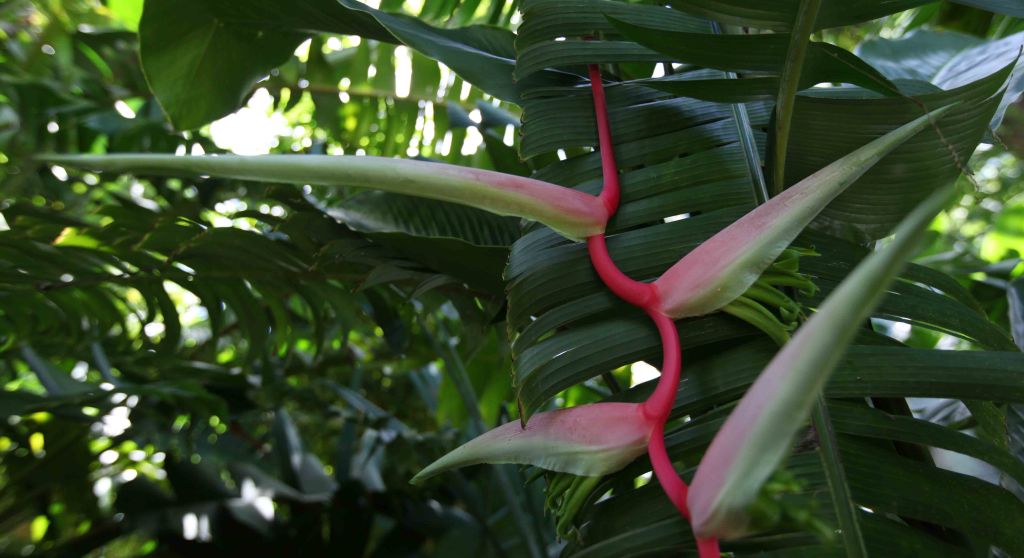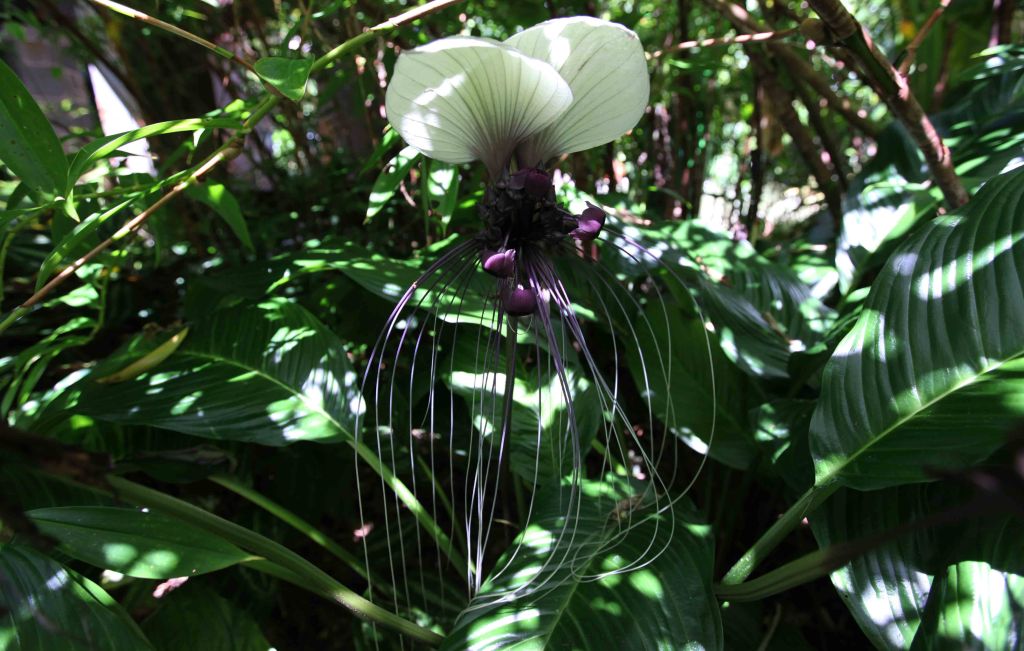Cairns Botanic Gardens
Cairns Botanic Gardens. The Flecker garden was established in 1888 and is the only part that is fenced with
opening hours. The rest of the gardens are open 24 hours a day. It is easy to get to the gardens by car or bus.
There is a visitors center where you can get guided tours and a map. Admission is free to the garden.
There is a small café at the visitors center, and another café in the Flecker garden.
There is a large bamboo collection open all hours. These are Bitong bamboo,
Dendrocalamus asper, also called giant bamboo. They can reach 15 — 20 m.
The new shoots of Dendrocalamus asper are huge, and you can almost watch them grow.
The stems can become 8 — 12 cm in diameter – enough space for lots of notes.
Lipstick palm or red sealing wax palm, Cyrtostachys renda.
The plant does not produce sealing wax but its colour looks like it. It is an ornamental plant, and can be 16 m tall.
Many of the palm trees found in the tropical forest protect themselves from climbers.
These are sharply discouraging.
The Sarawak palm, Salacca magnifica, which consist of around 20 different species.
The most widely grown species is called the snakefruit palm and produces edible fruit.
The Silk Floss tree, Ceiba speciosa, native to Latin America. It is related to baobab and kapok.
The Sausage tree, Kigelia pannata, native to sub-Saharan Africa. A sausage can become a foot long and weigh ten pounds.
The garden has very old plants that existed 200 million years ago, like these Cycad palms.
Staghorn fern.
There are quite a few “animals” in the tropical forest, like this large spider, a Golden orb web
spider of the Nephilidae family. It was larger than the palm of a large hand. Not poisonous.
A Kookaburra, which is native to Australia and New Guinea. We spotted this on the ground in the bamboo forest.
A New Guinea Trumpet Vine/ Creeper Tecomenthe dendrophilia covering a tree.
The Watkins Munro Martin Conservatory hold many sensitive and valuable collections
including carnivorous plants, orchids, plants that support butterflies and aquatic plants.
Especially the orchids and carnivore plant displays are very impressive.
Orchids in the Conservatory.
Vanda orchid in the Conservatory.
Part of the display of carnivorous plants in the Conservatory.
These are Nepenthes maxima, Great Pitcher Plant.
These are Ventricosa x sibuyanensis, another pitcher plant.
One of many ginger plants.
Heliconia. Maybe H. psittacorum or H. schummaniana.
Helconia angusta.
Heliconia rostrata.
Alpinia purpurata Red Ginger.
White Bat Flower Tacca integrifolia. Some in the Flecker garden, but clearly seen in the Conservatory.
One of the entrance signs, barely visible because of the growth. The garden is very well established.
When we headed back to the bus stop, we passed a river with this sign. It is not a joke.
